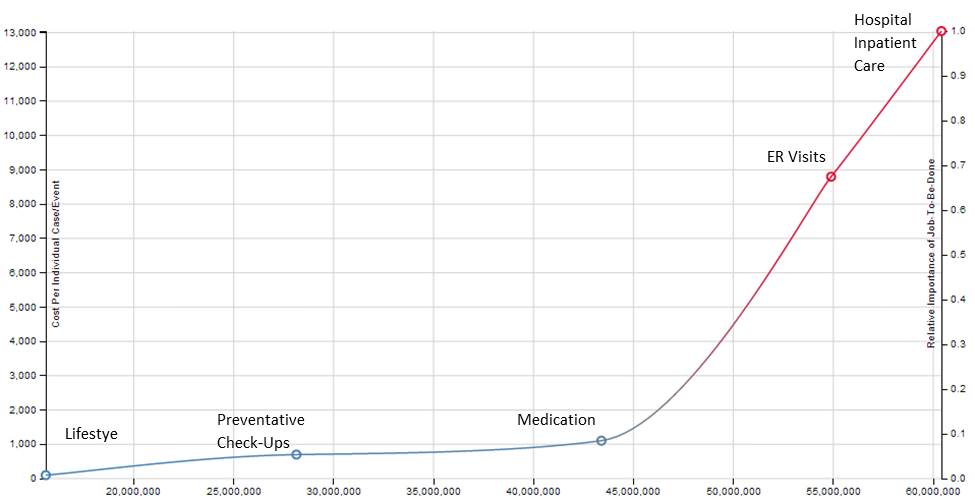One thing the health care industry should admire about Wall Street capitalists is their ability to define their target and measure how well they are doing in achieving their aim. Most people would agree the aim of capitalism is profit (saying nothing of whether that is the right aim or not). The measures of that aim are reasonably straightforward using a standardized language of accounting rules. These standardized rules make it easy to compare one business to another using financial ratios (e.g., profit margin, return on capital, return on assets, etc.). When armed with knowledge of the rules and data to compute the financial ratios, deciding what to invest in becomes fairly straightforward—you invest in the opportunities that drive the highest profits over the shortest period of time.
What is the aim of health care? Many of us would say it is health. If that is the case, however, we have been rotten resource allocators. Take diabetes, for example. In 2011 there were over 60 million care events in the US related to diabetes. The cost per episode is plotted on the chart below. It clearly shows (not surprisingly) that the sicker you get, the more expensive your care is. This is not to say that we shouldn’t spend anything on very sick patients. What it does indicate is that though we say we value health, we actually choose to spend our money on sickness.
What would need to change to aim the health care system at health (vs. sickness) and effectively measure our returns on that investment? Here are a few thoughts:
1- Institute a common language for measuring health (and return on health investment)—Countries with developed capital markets almost always have a regulator that imposes a standardized language for financial measurement and reporting. In the United States this regulator is the Securities and Exchange Commission and the standardized language is Generally Accepted Accounting Principles (GAAP). Professor Regina Herzlinger of Harvard Business School has advocated for an ‘SEC’ for healthcare measurement and reporting. We join her chorus in advocating for this as a critical foundational need on which to base improvement going forward.
2- Create business models that make money on health (instead of sickness)— Patients have jobs to be done related to both health and sickness. Unfortunately, in the US providers by and large can only be paid for treating sickness, so the incentive to create businesses truly focused on health has been low. That is changing with the advent of new payment models and technologies such as telehealth, remote monitoring, and predictive analytics. We encourage entrepreneurs to ambitiously pursue business models where providers can make money on health care independent of sick care.






 stupid!… It has to be designed from the ground up to be an integral part of the patient care experience”. Can’t argue with that now, can you? Particularly when coming from a practicing physician.
stupid!… It has to be designed from the ground up to be an integral part of the patient care experience”. Can’t argue with that now, can you? Particularly when coming from a practicing physician.









